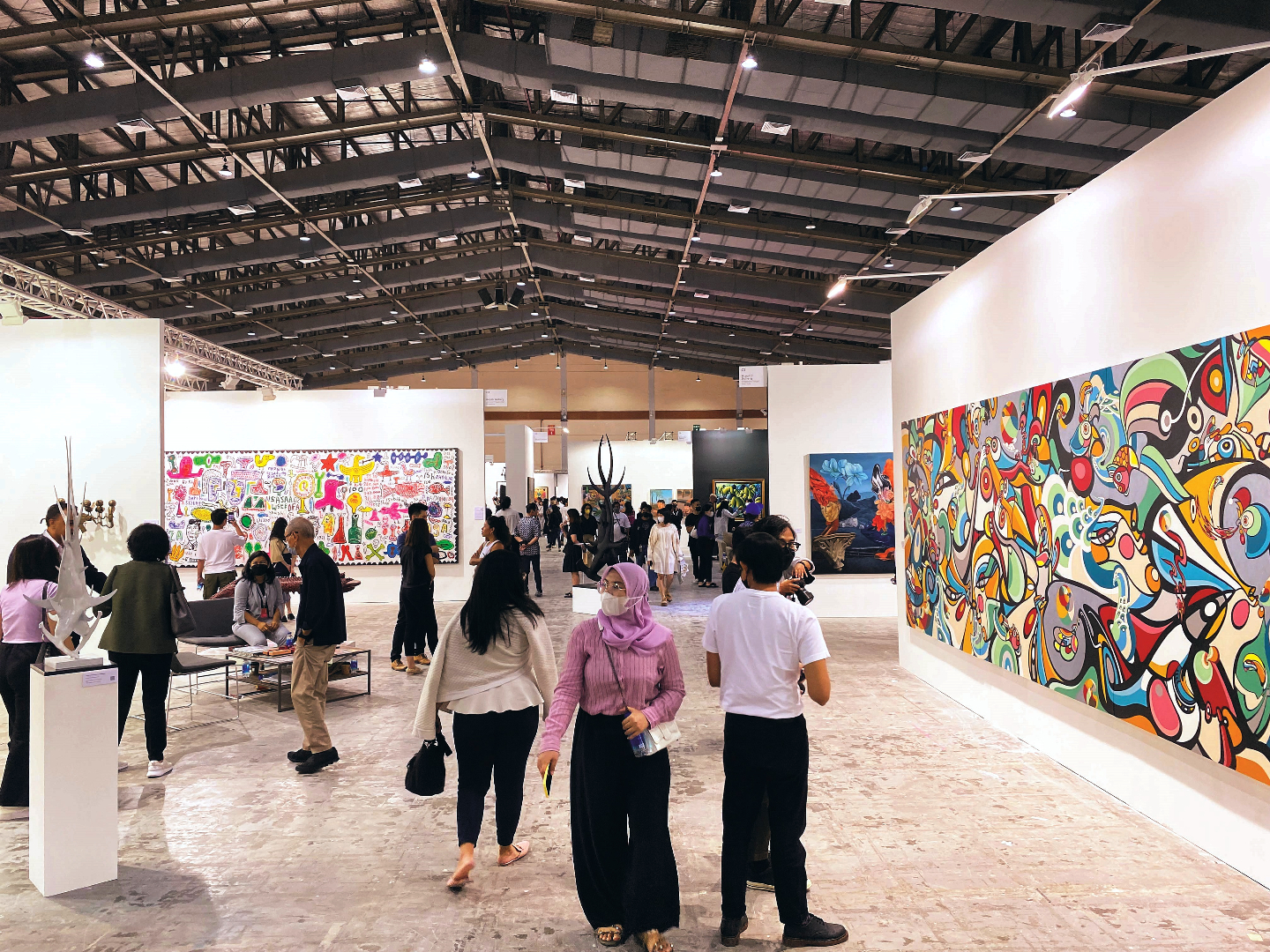
Galleries, collectors of all statures, artists and just about everyone else in the fraternity came together and put their best foot forward (Photo: Art Jakarta)
If the Asian visual arts scene had been experiencing a prolonged winter for the past two years, the winds of change seem to be heralding a shift.
The well-known international art fair Frieze recently made its debut in Seoul. It was held at the same time as the established KIAF (Korean International Art Fair), effectively increasing the city’s footprint as a contemporary art destination.
Closer to home, next January will see the introduction of Art SG, considered “the most hotly anticipated art fair launch in 2023”. Delayed by the Covid-19 pandemic, the new event at Singapore’s Marina Bay Sands Expo and Convention Centre is set to dethrone Art Basel Hong Kong as the leading one of its kind in the region.
Then, there is long-running Art Jakarta, that had a promising rebrand in 2019 when it moved to the Jakarta Convention Centre under the direction of prominent collector and founder of online art archive IndoArtNow, Tom Tandio.
Following a momentum-halting forced hiatus, the return of Indonesia’s premier art event from Aug 25 to 27 stirred anticipation and excitement in us all. After all, the Art Jakarta experience was fun and unique for its extraordinary local spirit of celebration and support for the art scene. Galleries, collectors of all statures, artists and just about everyone else in the fraternity came together and put their best foot forward. A friend described it as the gotong-royong spirit that those of us from the Southeast Asian region would know well.
dsc01134.jpg
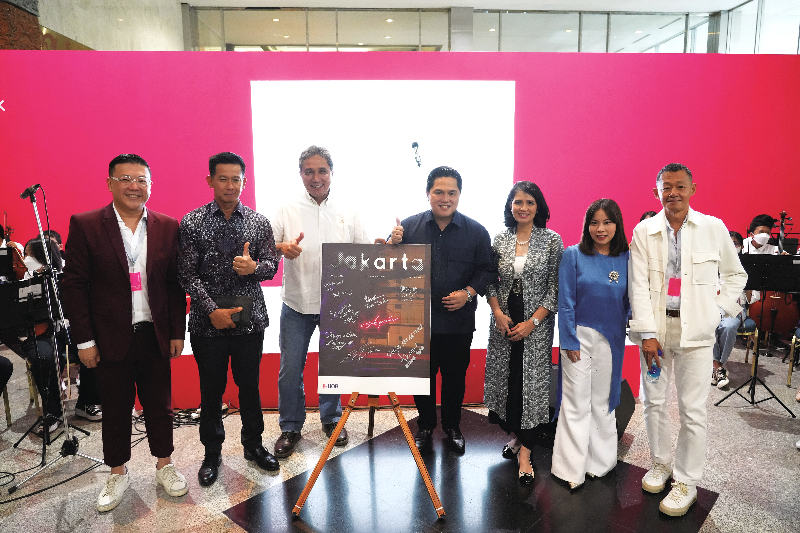
While returning to Jakarta this year did give rise to a tentative start — considering that many of us have not been out of the country for any art-related events in the last 2½ years — any hesitation was soon put aside as there was much to see and do.
“We took on a bigger space actually,” says Tom when he managed to stop for a brief chat. Taking up more than 8,000 sq m, compared with the 6,000-plus sq m in 2019, the larger space allowed for bigger Biennale-like installations and more booth space per gallery, even though participation is slightly lower with 62 local and international galleries, compared with 70 in the previous edition.
The fair director was in a happy mood, no doubt relieved after a good opening day, although the physical exhaustion from running around to ensure patrons, collectors, guests, galleries and artists would have access to him was beginning to set in. Still, he was not likely to take anything for granted.
“We cancelled the planned 2020 event when the lockdowns began, and started something called Art Jakarta Virtual — a four-month online exhibition. We did get quite a number of visitors online, probably due to the fact that everyone was holed up at home and still wanted an avenue to see or buy art,” says Tom.
dsc00465_1.jpg
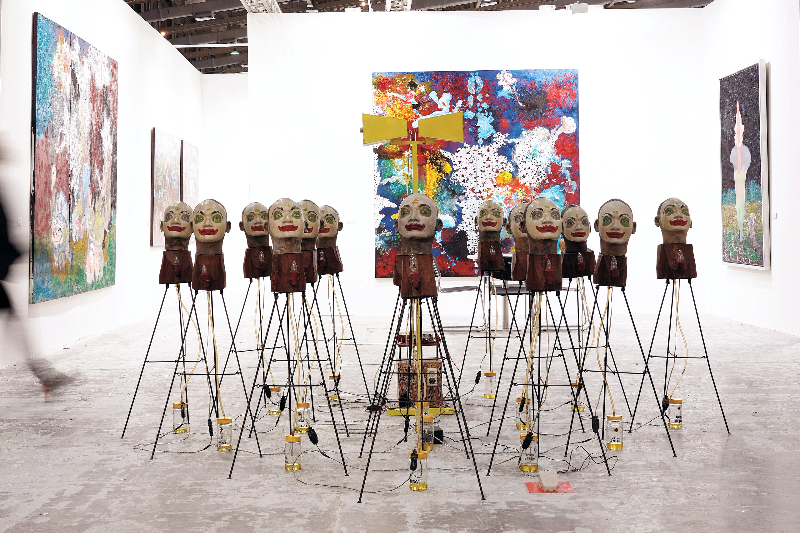
Last year, the team came up with Art Jakarta Gardens, a sort of outdoor pop-up event that was postponed until April this year. “It was very successful. People still wanted to have only outdoor activities, so we put two tents in a garden with a lot of sculptures outside. Twenty galleries participated, mostly local except for Malaysia’s A+ Works of Art. The sales were so good that they are now asking us to repeat this next year. So, we will.”
Tom says the teaser event helped local galleries find the confidence to come forth again. It was a stark contrast to the previous couple of years, he notes. “I think it was quieter here for our art scene compared to Malaysia’s, because galleries were considered entertainment in Indonesia, and therefore not allowed. Of course, that meant artists couldn’t earn a living.”
Walking around Art Jakarta and seeing the crowd once again is a hopeful sight, one of better days ahead. Still, has the pandemic effected any key changes? That was the foremost question for me. The following are the three main takeaways from the 2022 edition.
art_jakarta_2022.jpg

A new young crowd
South Korean popular culture has coined the term “MZers”, that is, millennials and Gen Z young adults. There have been signs that the Covid-19 era has escalated the emergence of this new collector base, hard to miss at Art Jakarta, where there were fewer people dressed in formal batik outfits and not as many elegant well-heeled tai-tais to be seen. There were far more people in jeans and untucked shirts, colourful, edgy fashion and a decidedly more casual vibe.
Malaysian artist Justin Lim, who was present to showcase two key works under Richard Koh Fine Art, describes a sort of “little generation leap” within the last two years, both in terms of those looking for art and artists. “I think it’s a post-pandemic effect, where maybe there’s a lot of pent-up feelings, or the need for people to want to see new things, new art.”
Kuala Lumpur-based Artemis Art owner and director Syed Jamal Al-Idrus agrees that the collector demographic is changing globally. “It’s not as apparent in Malaysia yet, but from what we saw at Volta Basel in June — at which Artemis participated for the first time — the average age of those coming to the fair was lower than before.”
Tom points out that galleries have reported more new buyers, many of them younger in age. He attributes this partly to the rise of cryptocurrencies, which has created a fresh pool of art fans.
dsc00442.jpg
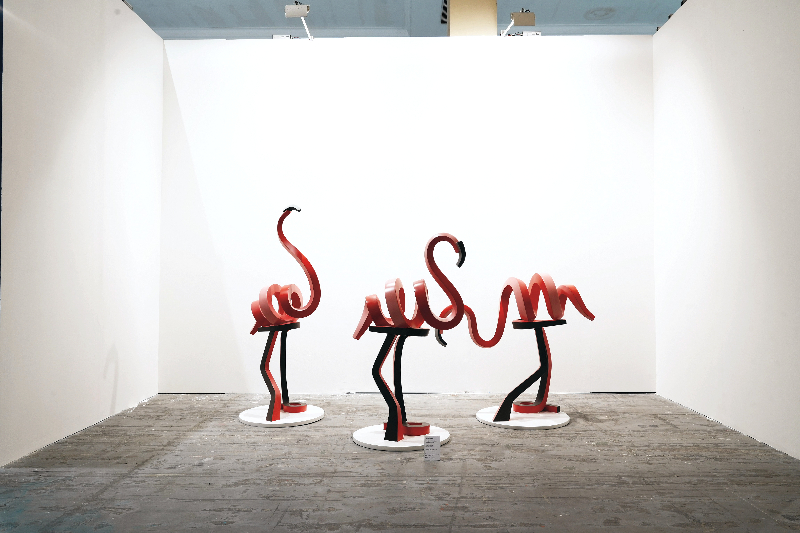
Colourful artworks
Correspondingly, the artworks seen this year also reflected a shift towards stronger representation from younger and emerging artists compared with the majority of established veterans or modern masters in the previous edition.
With that came more urban, street, pop and digital-art inspirations. Among the Malaysian galleries present, Artemis Art seemed to have wholeheartedly embraced this trajectory. Featuring a mixture of artists: Syahbandi Samat and Leik Lim from Malaysia; Dedy Sufriadi, Oky Antonius and Taufik Ermas from Indonesia; and Chang Chiung-Fang from Taiwan, the curated works clearly had a more youthful and contemporary vibe.
“Yes, it is deliberate,” says Jamal. “Because that is what is getting a lot of focus in the art world today, and the fair goers have been responding well to that direction as well.”
From an artist’s perspective, Lim says the artistic focus of those from his generation, be it millennials or Gen Zers, will inevitably revolve around issues that mark this era, especially ones surrounding social anxiety, identity and mental health.
One such work was by his fellow RKFA artist, Joshua Kane Gomes (born 1993), who presented three steel and fabric sculpture works named Parasocial I, Parasocial II and Parasocial III. Birthed from his musings and reflections during the pandemic’s periods of isolation, the characters — inspired by a cannibalistic spirit Wendigo — nevertheless are a contrast to the evil inspiration with pastel colours and animated expressions reminiscent of one of Hayao Miyazaki’s characters.
rkfa_install_shot_art_jakarta_2022_1.jpg
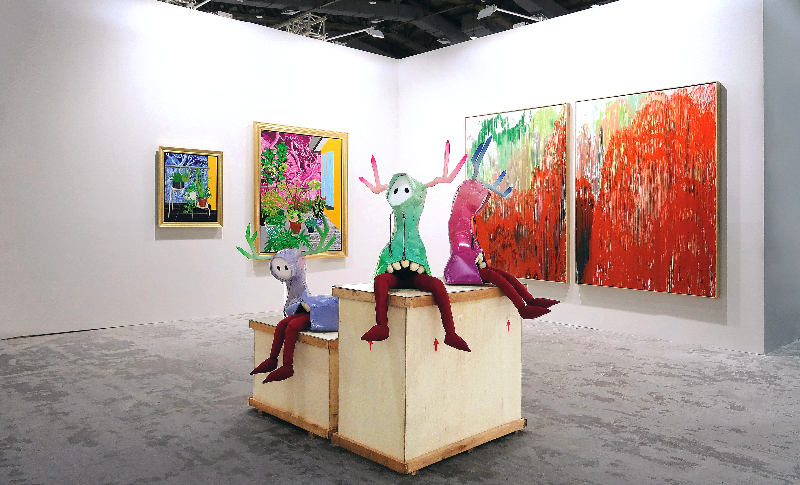
Perhaps this juxtaposition and tension is something we can all relate to in one way or another post-pandemic, after going through the ups and downs of uncertainty and lockdowns, as yearnings for escape coexisted with worries about safety and security, in an era that birthed hyper-connectivity through digital technology and at the same time, utter isolation.
Lim’s paintings of suburban gardens inspired by his Petaling Jaya home, was a means to escape from the boredom and solitude of the stifling lockdowns and a looming melancholy. Incidentally, both paintings from the series called Sanctuary are hyper-coloured in tone.
“Maybe it’s just me, but I find that the younger generation — we have learnt to be optimistic in bleak times. And so, the brightness is in direct contrast to the bleakness I feel in the world. It’s the opposite effect. I want to inject some colour into this world,” he says.
Malaysian collectors at Art Jakarta particularly found the fresh energy stimulating. Leonard Tee, a filmmaker and co-owner of Warong Old China and Old China Café, says the local support for younger artists was admirable. “We were invited to visit corporate offices and homes, and you could see a diverse range of artworks proudly displayed. The Indonesians really have a better sense of art appreciation, not just as an investment, but as something to enjoy, as if they have an [intrinsic] understanding of the value of art itself.”
membangun_literasi_indonesia_baru_by_yogyakarta_artist_dedy_sufriadi_built_from_a_large_number_of_books_.jpg

The NFT boom
Arguably the most significant change in the last two years that has had an imprint on the art world is the explosion of the non-fungible token market. Cryptographic assets that leverage blockchain technology, these have revolutionised the art world as NFT art takes prominence.
Some see this digital disruption as a threat. One of the show-stealing works in Jakarta was Jogja-based Justian Jafin’s installation, which took up an entire booth. Titled Estetika Sintetik, he mimics NFT images on the outside in a wall of repetitive paintings, as a commentary of an artist fatigued from battling a future that may not have room for someone like him.
Justian’s concerns aside, Art Jakarta 2022 ensured that NFT art was given its due position at the fair. In fact, one of the first booths one saw was Cohart, a Los Angeles-based NFT art platform, which presented Kuala Lumpur-based Texan NFT artist Frenemy and his series of physical prints, each of which was paired with an NFT work as well.
Cohart co-founder Shyevin S’ng notes that NFT can have a complementary place in the world of physical art. For one, the accompanying NFT with each of Frenemy’s print works serves as a receipt or digital authentication of ownership and legitimacy.
nft_artwork_by_frenemy_for_cohart.jpg
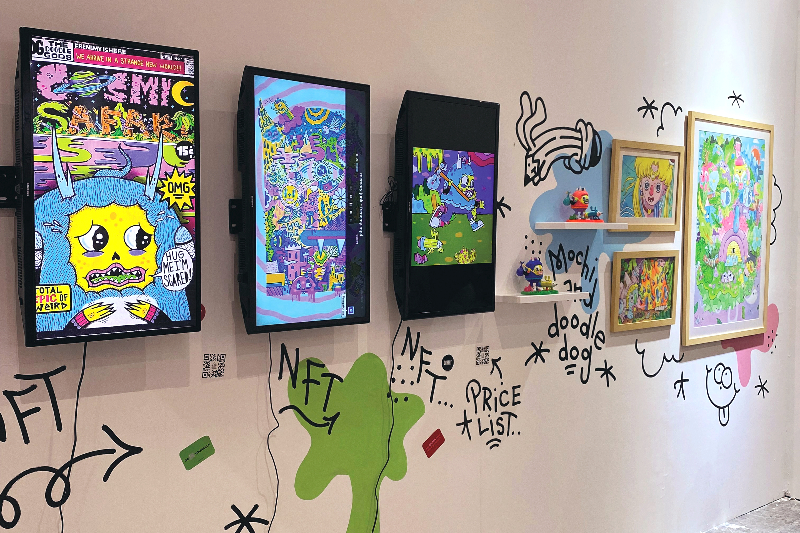
In a dedicated workshop where viewers could watch the entire process of making an NFT in real life over three days, Indonesian art collective The Monday Art Club pointed out that the exercise is another way for people to discover and learn more about NFT art.
Tom, an avid supporter and collector of NFT art himself, says, “At Art Jakarta, we’ve always seen NFTs as another medium of art, not just monetary distribution. There are a lot of things it can do that other mediums of art cannot, such as the smart contract, which offers many possibilities.”
In the end, it is also about the value of community, which is incredibly fast-growing in the NFT world. “The scene as a whole in Indonesia is already quite big, and there are a lot of artists getting into it — including those traditionally not fine artists, but who now have a platform to shine. We definitely believe in the potential of NFTs.”
Going forward, the director reveals that by staying in its lane and focusing on championing the growth of Indonesian art and its market, Art Jakarta can contribute to the development of the Southeast Asian art scene. “And as the wider Asian market continues to strengthen, it will help our continued development and facilitate exchanges more easily through regional and even global connections.”
This article first appeared on Sept 19, 2022 in The Edge Malaysia.


